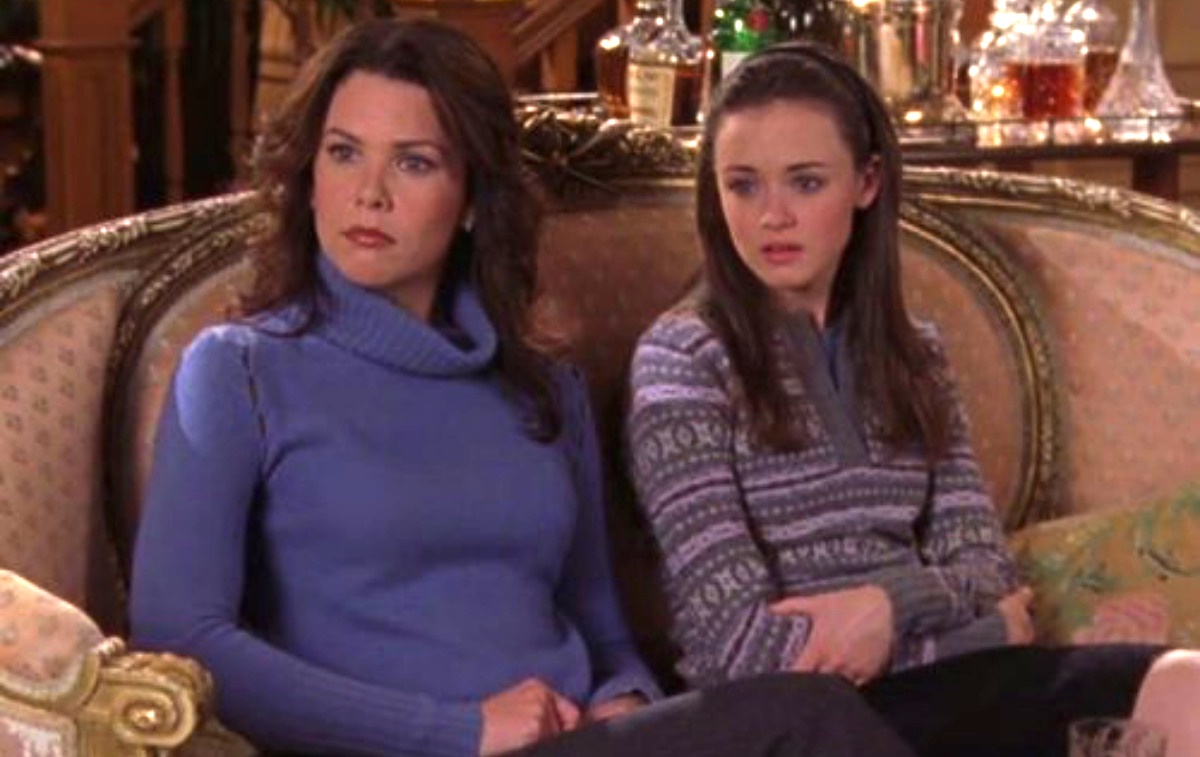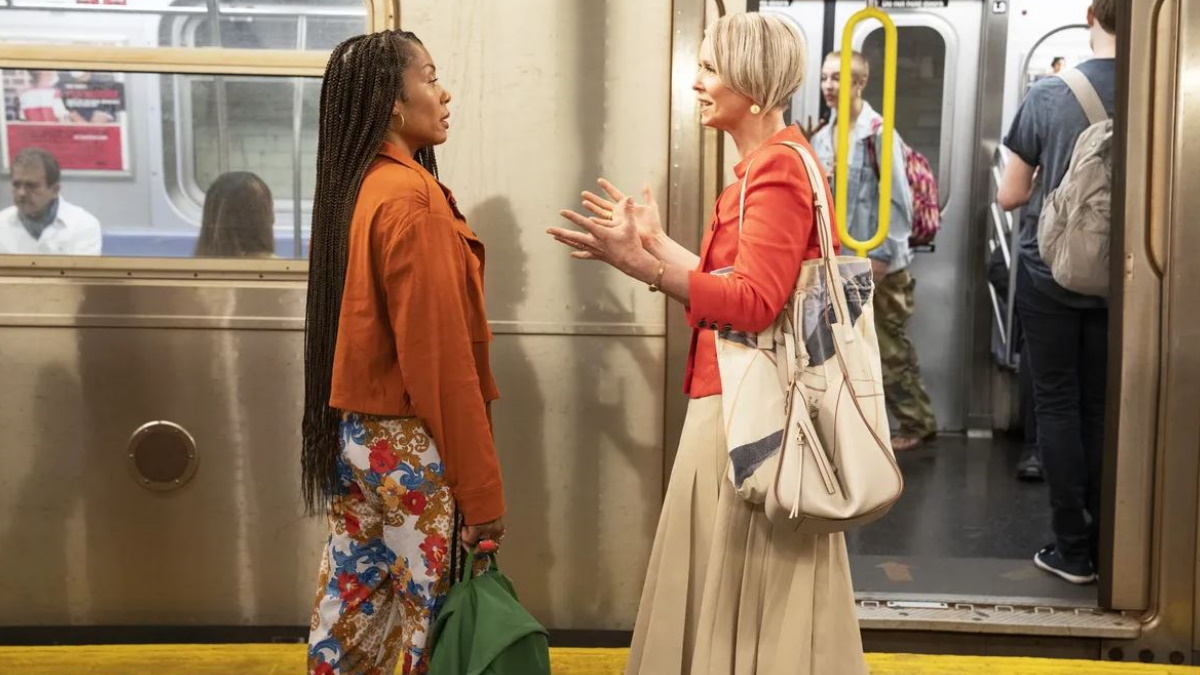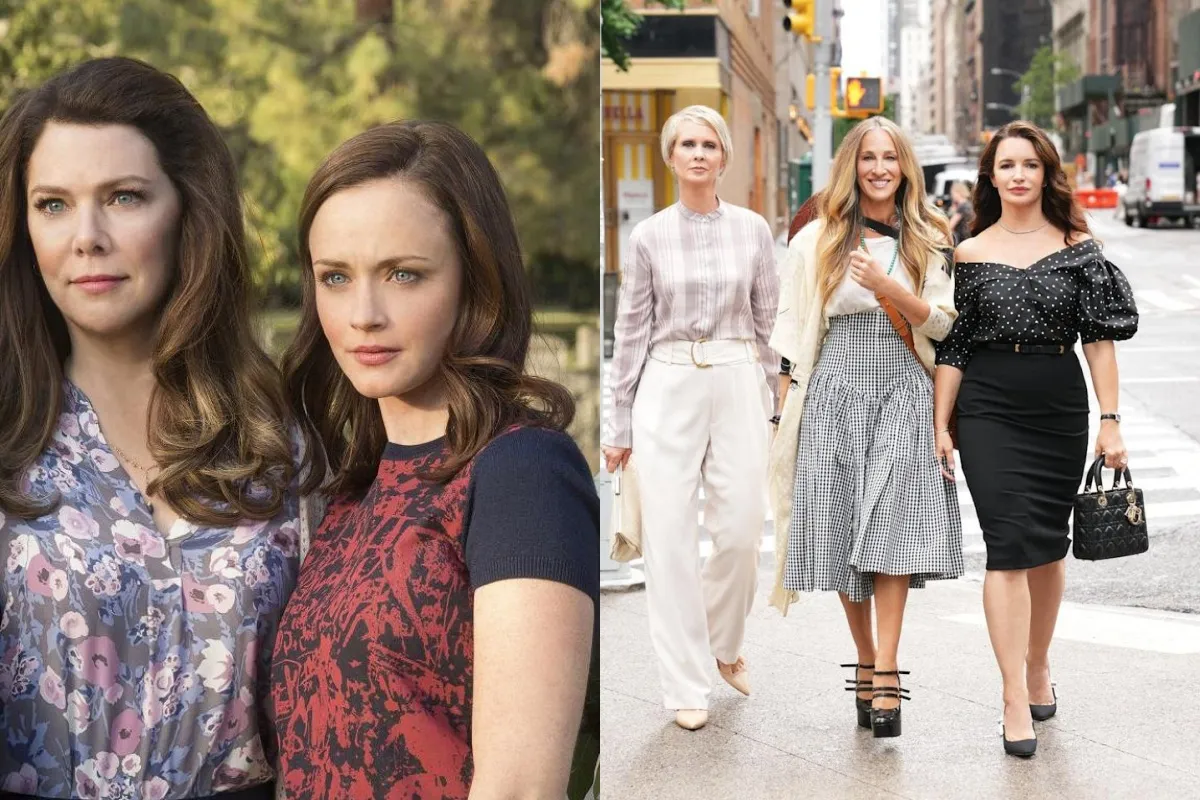Sex and the City sequel series And Just Like That… ended this week, and I’m still processing the mediocrity. I found myself asking what other far-flung revival has been so bad at understanding the appeal of the original source material in such a visceral way? Oh, right: Gilmore Girls: A Year in the Life.
Both series were not only groundbreaking for their time but crafted a culture around them. Once you become invested in the shows, it transforms your lexicon. Even as someone highly critical of both the original Gilmore Girls and Sex and the City, they have become comfort food for me. But the spinoffs highlight all the things that were problematic about the original series, but rather than improving in those areas, the revivals have simply illuminated the problems—with the brightest ring-light.
Rory Gilmore and Miranda Hobbes are two characters that have long been defined by their driven nature, feminism, and ability to be (mostly) rational.
When we first meet Rory, she is a near-impossible genius student whose nose is stuck so deep in a book that she doesn’t see a fight happen. Her dream is to become a journalist, and her hero is Christiane Amanpour.
I’ll be the first to admit that Rory’s genius did not always match up with her actions. The show often elevated her to ridiculous levels of capability (allowing her to graduate on time despite leaving Yale suddenly for an extended period), but, at the same time, made her miss the obvious—being obsessed with going to Harvard but not knowing you needed extracurriculars, for instance.
Still, there was no excuse for A Year in the Life to have Rory act as though she’d never had to interview for a job in her life. Or that she would fall asleep during an interview. Rory is shallow and unaware of her privilege, but she’s not incompetent. It is all a way to justify her coming home.

In her personal life, she keeps forgetting to break up with her current boyfriend and has become a serial cheater, carrying on an affair with Logan (who, due to series creator Amy Sherman-Palladino hating the final season of the original series, is now back working for his sh*tty dad even though that was a whole plot thing in season seven, but whatever, just screw my OTP). Rory was turned into a parody of herself, but it never felt intentional—just misguided.
As for Miranda in And Just Like That…? Woof, where do we begin?
I think what is interesting about the choices that Miranda makes in And Just Like That, is that the writers have been very vocal about their intent, but it just makes the whole project seem even more questionable.
They wanted to show Miranda being awkward around a woman of color—her professor—because as a white woman in her 50s, that felt “realistic” to them. Alright, but why then must she turn into the best friend/confidant of said professor? Because they are around the same age? Even in their attempts to discuss the whiteness of their leads, gods forbid they aren’t rewarded by it.
It might be realistic for a white woman who is not living in New York City and didn’t have a career in law for decades, or who didn’t date a Black doctor, but not for Miranda.
My best friend is watching SATC for the first time, and so I’ve been watching the messy ballad of Steve and Miranda play out again. One of the things that I find interesting is that Miranda was always the cynic; she was the one who wanted to schedule sex to fit their work times, and she was the one who found Steve’s romantic, big gestures suspect. Even if you go to the first movie, Miranda is the one uninterested in sex.
Is Miranda allowed to change? Do women leave their husbands in their 50s? Can women find their queerness at that stage in life? Absolutely. But real women are not the same as a character we’ve watched for decades suddenly transforming into someone else, randomly.
Miranda gives up a very big internship to go with Che to L.A. (a place she hated in season three). She keeps saying she wants to follow her heart.
Well, when Carrie wanted to do that in season six, Miranda said it was a mistake, and it was then and is now.

For some reason, no one is allowed to say anything about Miranda’s queer journey being all about one person. It’s ridiculous and completely different from the character we knew—not because she can’t change, because the only time she feels the need to be “logical” is when negging her friend about wanting to believe her dead husband is in heaven.
But this article isn’t just about talking about how much they made Rory and Miranda suck; it is also about how they handled the passage of time.
One of the things that can be interesting about seeing characters 10-15 years in the future is that people do change over time. We want to see how relationships have changed. Instead, most shows would like us to believe that in that time, no one has had a conversation.
Luke and Lorelai’s main issue in A Year in the Life is that Lorelai is wondering if they should have a baby together and considers adoption—something that Luke doesn’t really approve of. It feels like this comes out of nowhere when you’d think, as people who’ve been obsessed with each other for as long as they have, they would have talked about it, at least in passing.
With Steve and Miranda, it is as if Steve suddenly became hard of hearing a week ago and Miranda is smothered over a quick change, not something that would have been in slow decline for some time.
The characters who seemed most consistent were Emily and Charlotte, in their respective shows, because they always had security in who they were and what they wanted. Those things may not have always been great, but they allowed them to grow—to be wrong and learn from it, unlike the others.
Finally, I think neither show really understood that a changing time means new blood and new creators—not just adding a few. A Year in the Life still had fatphobia, ignorance about class, and mediocre queer representation because that is the trademark of the creators. And Just Like That… added people of color, but they only exist as tagalongs for white storylines. Different kinds of queerness are explored but in the most reductive way possible.
And I think one of the most disappointing things about both sequels is that … if they hadn’t been made, I genuinely do think it would have been for the best.
—The Mary Sue has a strict comment policy that forbids, but is not limited to, personal insults toward anyone, hate speech, and trolling.—










Published: Feb 4, 2022 02:42 pm